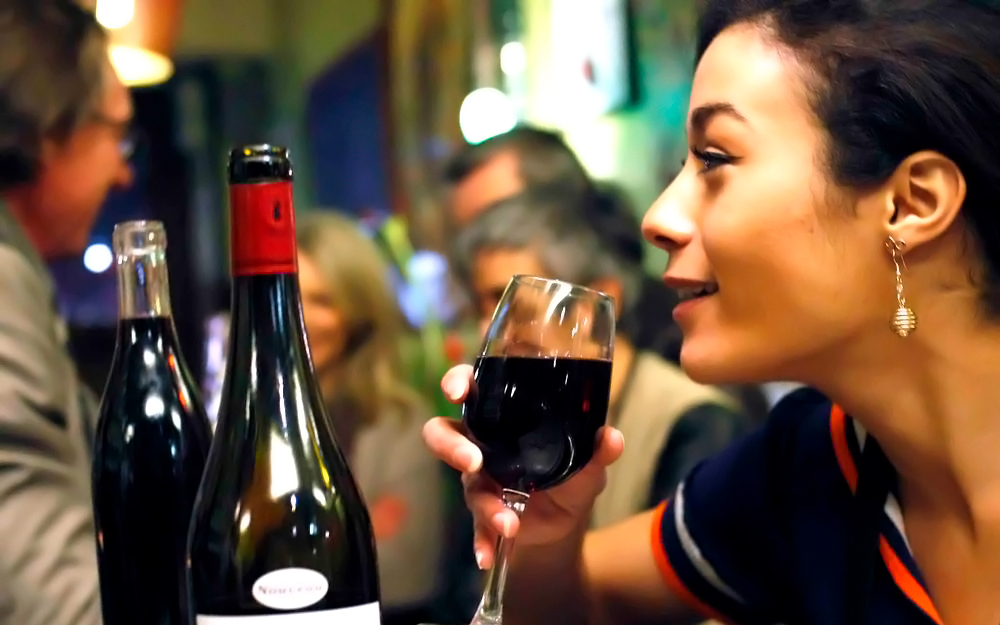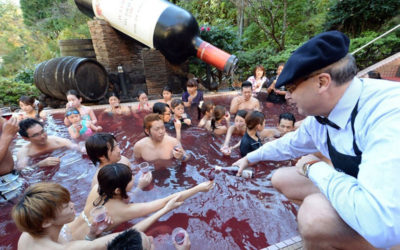
BY RICK RIOZZA
Questions anyone? Welcome back my friends to the wine show that never ends! Last column we took a metaphoric mystery wine tour around the world and played a little game to the tune of “Name that Wine!”
Already I’ve received some fun responses from wine clubs and gatherings, groups and parties that have started off their own tastings centered on our mystery trip. You vino heads are an entertaining bunch!—Cheers!
Spoiler alert or not—let’s reminisce a bit and discuss the wines we literally or figuratively enjoyed on our expedition.
 It’s enlightening to think about the three original French varietals that have especially hit it big re-planted in South America. Argentina has its Malbec; Chile with its Carménère; and now, we’re seeing the Tannat [tah-NOT] grape unveiling its advantageous inclinations in Uruguay.
It’s enlightening to think about the three original French varietals that have especially hit it big re-planted in South America. Argentina has its Malbec; Chile with its Carménère; and now, we’re seeing the Tannat [tah-NOT] grape unveiling its advantageous inclinations in Uruguay.
The clue last week was that this grape produces one hell of a healthy wine with all of its deep and dark antioxidants, resveratrol, anthocyanins, polyphenols, and stimulating tannins. At one time, that would have been a nightmare of a description scaring most quaffers away! These days, our fitness generation is eager to hear more.
Anthocyanin pigments and associated flavonoids have demonstrated the ability to protect against a myriad of human diseases; ditto that with resveratrol and antioxidants as well. We’ve learned to look for deep purple and dark blue fruits for their health benefits, and, so the same with wines that contain high amounts of anthocyanins such as Petite Sirah and Tannat.
Back in the day—in Southwest France, the wine produced in that area, being so dark, no sane Frenchman reckoned it a red wine, but rather a “vin noir”—black wine. Tannat is still being produced there in and around Madiran with all of its gripping tannin might and is sometimes blended with a good shot of Merlot for roundness. Its brother crop grown in Uruguay—now with the moniker of a “new world wine” also shows a natural roundness that is more geared to the California palate.
To quote myself from the last column, “…we love the smooth and rich flavors of a hefty dark red wine; the concern often, is that those wines can come off a bit fruity sweet. Our wine in town here, pretty much leaves that aspect out. So we can enjoy its flavors of blackberries, black cherries, black licorice, black plums; coffee, earth, leather; cassis, chocolate and jam; and prunes, smoke, vanilla & spices without any annoying sweetness.”
And the price is right: I’m picking up a bottle at my Total Wine store for tonight’s steak dinner, Domaine Du Moulie Madiran around $13. Costa Nichols, over at his Desert Wine & Spirits in Palm Springs, also offers some tasty Tannat for around the same price. Feel free to ask him to recommend something—he’s always on point.
Last week’s Tour #2 brought some lively responses and reasoning. The operative clue was that there were “10” areas in this famous wine region. We also talked about pairing this wine with pretty much any dish on earth with its floral aromatic, lip smacking red fruit flavors. And then we threw in the bombshell: how many of us frolicked French at a Beaujolais Nouveau party, joining the world together on the third Thursday in November?
No doubt a very smart French marketing ploy to taste the country’s first 6 to 8 week old wine—as the chant goes, “Goûtons voir si le vin est bon!” Ironically, this fête now seems out of favor, due to the fact there are more wine savvy drinkers who laugh at the quality of this young wine. Geez—lighten’ up! Historically, the Gamay grape that produces Beaujolais, was grown in the broader Burgundy area before being chased out-of-Dodge for the preferred money grape, Pinot Noir. No one can fault that decision—I guess, but fortuitously and serendipitously, Gamay took well to the unique clay over granite slopes of the “new found” Beaujolas wine region, producing unique world class wines, some even capable of aging wonderfully. At the highest quality level, the Beaujolais wine region contains 10 crus — communes that have the right to wear their own appellations on the label such as the recognizable Brouilly, Fleurie, Juliénas, Morgon, Moulin-à-Vent, each with their own flavor profile from light to full medium-bodied. A step below is Beaujolais Villages, with Beaujolais itself as the broadest, most generic appellation—Beaujolais Nouveau being a baby BN. One can have no better wine tasting tour on your own dinner table than to try the different crus of Beaujolais to determine the ones you like best: Fleurie—light, floral and aromatic, velvety smooth; Brouilly—more fruity than floral; Morgon & Moulin-à-Vent more full-bodied, “meaty”, Burgundian in style. The Walla Walla Washington region was the first on our tour and any true red wine lover is currently and probably forever enamored with the Cabs, Merlots and Syrah produced here. Que Syrah, Syrah—whatever will be. The terroir—if you please, appears to work as a heavenly garden garrison allowing the Syrah to shine with vibrant and complex flavors styling a wine of elegance and balance that’s a splendid match for a meal. The classic profile includes aromas of cured meat leading to flavors of dark fruit, blueberry, black pepper, black tea and earthy minerality that are backed by smooth, approachable tannins in the lengthy finish. So many great labels up there, it’s easy to recommend both the Otis Kenyon wines and the Gordon Estate wines: they deliver deliciously and are so reasonably price for the quality. Oh thou invisible spirit of wine…that we should with joy, pleasance revel and applause, transform ourselves into beasts!










































